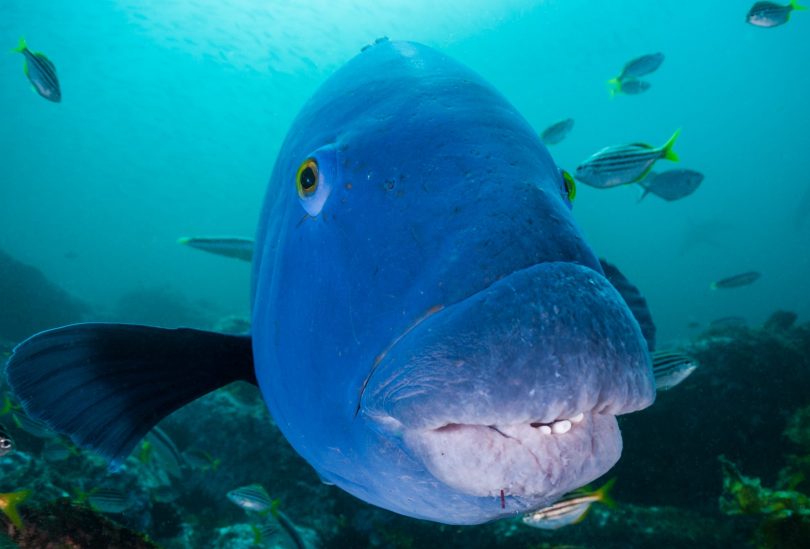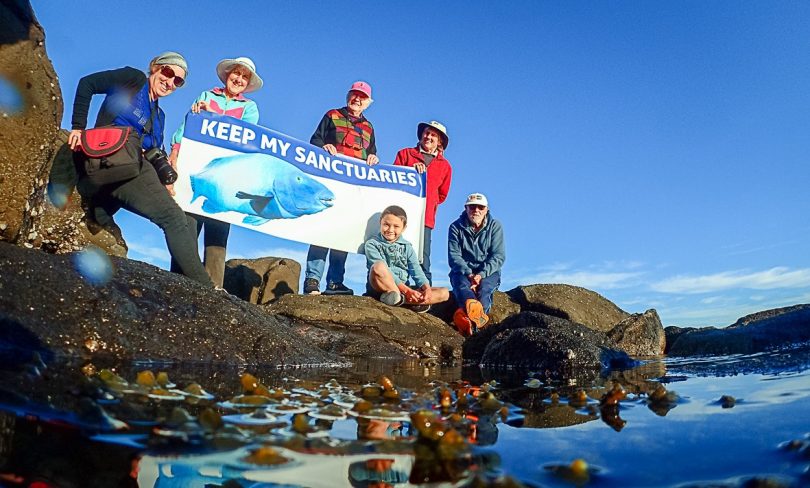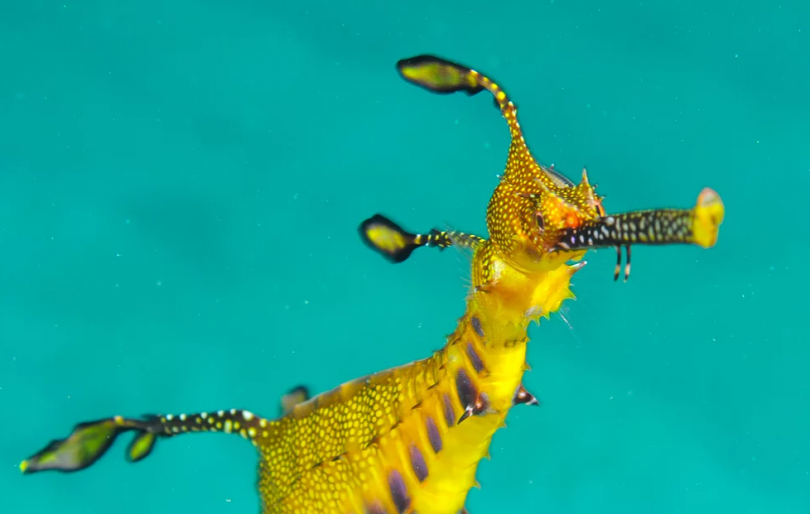
A blue groper in Batemans Marine Park. Photo: Pete McGee.
Recreational fishers have hit back at conservationists’ claims that the relaxation of rules within the protected waters of Batemans Marine Park is threatening marine species and habitats.
They say there are bigger threats to species such as the grey nurse shark, habitats such as kelp forests, and climate change, and the amount of fish caught by recreational fishers in the rezoned areas is minimal.
Conservation groups have been outraged at the relaxation of rules in the park to give recreational fishers more places to fish. The decision was made by NSW Minister for Agriculture Adam Marshall and Member for Bega Andrew Constance in December 2019.
Five areas previously off limits were approved for activities, including catch-and-release recreational fishing, line fishing and spearfishing. They included Brou Lake South (catch-and-release recreational fishing); Montague Island South and East (recreational line fishing, spearfishing and diving for abalone, lobsters and other invertebrates); Clarks Bay-Freshwater Bay and Forsters Bay (recreational line fishing and spearfishing, but no use of nets or traps); and Nangudga Lake (recreational line fishing and prawning using a handheld scoop).

A map of the new zoning in Batemans Marine Park. Photo: NSW Government.
The Save Batemans Sanctuaries community group says the changes add stress on endangered grey nurse sharks, blue gropers, seals, penguins and other sea birds around Montague Island.
The group also says vital southern ocean kelp forests and biodiverse rocky reefs already under threat from encroaching urchin barrens now face even greater pressure to survive.
However, Euro Fishing Association president Adam Martin – who was instrumental in the relaxation of the sanctuary rules – said the chances of harm to grey nurse sharks is minimal.
He said leaders of the local recreational fishing community previously agreed to a list of behaviours – including fishing only with circle hooks and lures – to ensure responsible fishing in the areas rezoned.
“There’s almost zero chance of hurting a grey nurse shark with a circle hook,” said Mr Martin. “Anecdotally, grey nurse sharks don’t take to fishing lures.”
Fishing at Montague Island is also restricted between 1 November and 30 April each year to protect grey nurse sharks.

The Save Batemans Sanctuaries community group has called for the NSW Government to reinstate sanctuary zones. Photo: Supplied.
Mr Martin agreed there was previously poor management of fishing in the park, but said he and many other fishers are working on conservation projects to restore it.
He also said there are bigger issues conservationists should be talking about, such as microplastics, which are invisible to the human eye but harming key marine species.
“To be honest, we are over fighting with the groups we feel attack us all the time,” said Mr Martin. “We are trying to get on with good work.”
Dalmeny commercial abalone diver Stephen Bunney is a leader in the marine restoration space and agreed there are bigger environmental issues at play.
Mr Bunney – who is also on the Batemans Marine Park Advisory Committee – is worried about the impact climate change is having on the Great Southern Reef.
About 70 per cent of Australia’s population lives within 50km of the reef. Its unique species and kelp forests are under threat from ocean warming, according to marine ecologist Dr Cayne Layton.
“When you understand what we’re dealing with – climate change – and then you look at what these environmentalists are saying about sanctuary zones, you throw your hands up in the air,” said Mr Bunney.
“It’s like putting a fence around a block of land when a bushfire comes through. Environmentalists are making out these sanctuary zones are the silver bullet, but they’re not.”
The Save Batemans Sanctuaries group has called for the NSW Government to reinstate the sanctuary zones or to safeguard more of the marine park as no-take zones.

A seahorse at Batemans Marine Park. Photo: Supplied.
Tackle World Moruya store owner Nick Toozoff said conservationists should be talking about bag limits and catch size limits rather than banning fishing in the sanctuaries.
He argued the number of fish anglers can take from the sanctuaries is “bugger all” and works hard to educate his customers to fish responsibly.
“Most limit their catch, rather than catch their limit,” said Mr Toozoff.
“Fishing is a pastime for many generations. I understand that commercial fishing has wiped out a lot of fish, but if fishing is managed well, it means my kids, their kids and so on can still get a feed.”
The Save Batemans Sanctuaries group said it wasn’t consulted by the NSW Government before the changes and wants to be consulted before the overall review of management rules across Batemans Marine Park is completed.
But Mr Martin said the NSW Department of Primary Industries did consult stakeholders and there was a lot of work done by scientists employed by the NSW Government on a risk assessment of relaxing the sanctuary rules.
“The claim that there was no community consultation is not true,” he said. “It just probably wasn’t done to the level those stakeholders wanted.”






